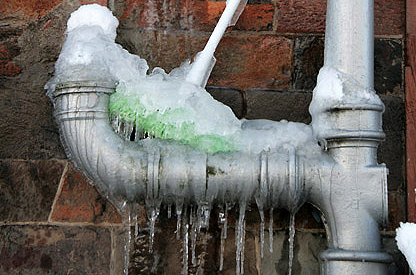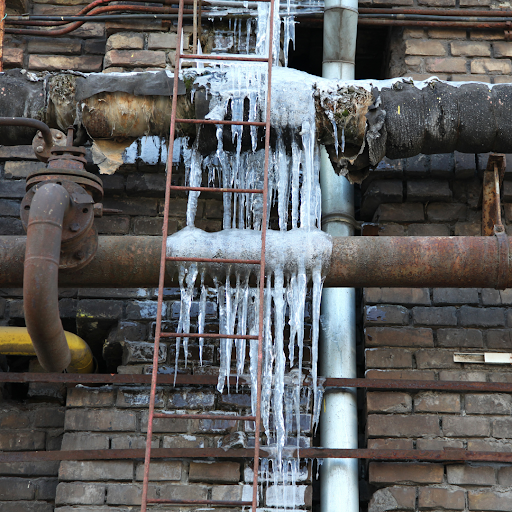Crucial Tips for Preventing Frozen Plumbing in Cold Weather Seasons
Crucial Tips for Preventing Frozen Plumbing in Cold Weather Seasons
Blog Article
This article listed below on the subject of Prevent Frozen Pipes is highly remarkable. Check it out for your own benefit and figure out what you think of it.

Cold weather can damage your plumbing, specifically by freezing pipes. Right here's exactly how to prevent it from taking place and what to do if it does.
Introduction
As temperatures decline, the risk of icy pipes rises, potentially bring about pricey repair work and water damages. Understanding exactly how to prevent frozen pipelines is critical for house owners in chilly environments.
Prevention Tips
Insulating susceptible pipelines
Wrap pipelines in insulation sleeves or use warm tape to protect them from freezing temperature levels. Concentrate on pipes in unheated or outside locations of the home.
Home heating methods
Maintain interior rooms appropriately heated up, particularly locations with plumbing. Open cupboard doors to enable cozy air to circulate around pipes under sinks.
Exactly how to determine icy pipelines
Try to find lowered water flow from faucets, unusual odors or noises from pipes, and noticeable frost on revealed pipelines.
Long-Term Solutions
Architectural changes
Think about rerouting pipelines away from exterior walls or unheated areas. Include added insulation to attic rooms, basements, and crawl spaces.
Upgrading insulation
Invest in top quality insulation for pipelines, attics, and walls. Correct insulation assists maintain consistent temperature levels and minimizes the risk of icy pipelines.
Securing Outdoor Pipes
Garden tubes and outside taps
Detach and drain garden hoses before wintertime. Install frost-proof spigots or cover exterior faucets with shielded caps.
Recognizing Frozen Pipes
What triggers pipes to ice up?
Pipes ice up when revealed to temperature levels below 32 ° F (0 ° C) for extended durations. As water inside the pipes ices up, it expands, putting pressure on the pipeline wall surfaces and possibly triggering them to burst.
Dangers and damages
Frozen pipes can bring about water disturbances, home damage, and costly repair services. Burst pipes can flooding homes and trigger extensive structural damage.
Signs of Frozen Pipeline
Determining icy pipes early can stop them from rupturing.
What to Do If Your Pipes Freeze
Immediate actions to take
If you believe icy pipelines, keep taps available to soothe stress as the ice thaws. Utilize a hairdryer or towels taken in warm water to thaw pipes slowly.
Conclusion
Avoiding frozen pipelines requires positive procedures and quick reactions. By recognizing the reasons, indicators, and safety nets, home owners can secure their plumbing during cold weather.
5 Ways to Prevent Frozen Pipes
Drain Outdoor Faucets and Disconnect Hoses
First, close the shut-off valve that controls the flow of water in the pipe to your outdoor faucet. Then, head outside to disconnect and drain your hose and open the outdoor faucet to allow the water to completely drain out of the line. Turn off the faucet when done. Finally, head back to the shut-off valve and drain the remaining water inside the pipe into a bucket or container. Additionally, if you have a home irrigation system, you should consider hiring an expert to clear the system of water each year.
Insulate Pipes
One of the best and most cost-effective methods for preventing frozen water pipes is to wrap your pipes with insulation. This is especially important for areas in your home that aren’t exposed to heat, such as an attic. We suggest using foam sleeves, which can typically be found at your local hardware store.
Keep Heat Running at 65
Your pipes are located inside your walls, and the temperature there is much colder than the rest of the house. To prevent your pipes from freezing, The Insurance Information Institute suggests that you keep your home heated to at least 65 degrees, even when traveling. You may want to invest in smart devices that can keep an eye on the temperature in your home while you’re away.
Leave Water Dripping
Moving water — even a small trickle — can prevent ice from forming inside your pipes. When freezing temps are imminent, start a drip of water from all faucets that serve exposed pipes. Leaving a few faucets running will also help relieve pressure inside the pipes and help prevent a rupture if the water inside freezes.
Open Cupboard Doors
Warm your kitchen and bathroom pipes by opening cupboards and vanities. You should also leave your interior doors ajar to help warm air circulate evenly throughout your home.

Do you like reading up on How To Avoid Freezing Pipes? Try leaving a comment further down. We would be happy to know your views about this article. Hoping to see you back again later on. I beg you pause to promote this page if you appreciated it. We treasure reading our article about How To Avoid Freezing Pipes.
Visit My Website Report this page